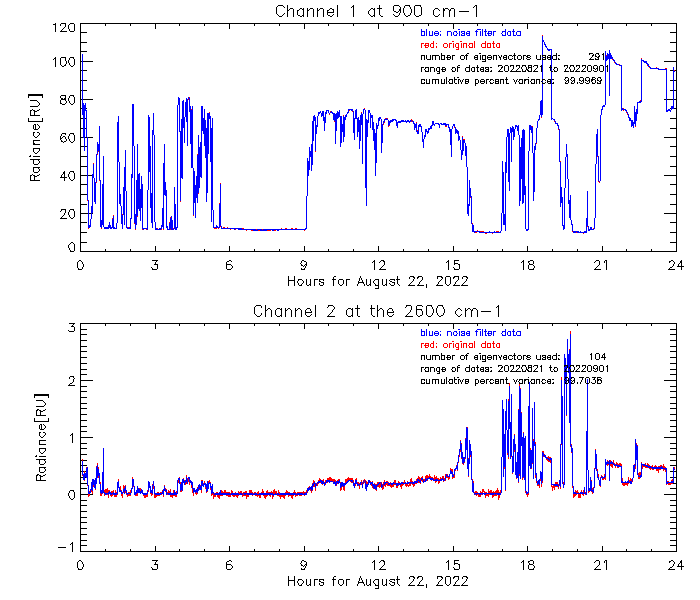
The Atmospheric Emitted Radiance Interferometer Noise Filtered value-added product (AERINF VAP) is now in production for the following field campaigns conducted by the Atmospheric Radiation Measurement (ARM) user facility:
- the 2021–2023 Surface Atmosphere Integrated Field Laboratory (SAIL) campaign near Crested Butte, Colorado
- the 2021–2022 TRacking Aerosol Convection interactions ExpeRiment (TRACER) near Houston, Texas
- the 2023–2024 Eastern Pacific Cloud Aerosol Precipitation Experiment (EPCAPE) in La Jolla, California.
The ARM AERI collects a sky spectrum every 20 seconds, but the high temporal resolution results in a large random noise in the sky spectra. AERINF uses the high correlation in the observed radiance across the spectrum to reduce the uncorrelated random error in the data using principal component analysis. The VAP automatically determines the appropriate number of principal components to use in the reconstruction to eliminate as much random noise as possible. A significant reduction in the uncorrelated random error in the data has been proven for both regular temporal data and rapid-sample data.
More information about AERINF can be found on the VAP web page.
Scientists can now use the AERINF data from SAIL, TRACER, and EPCAPE, which are in netCDF format.
Access the new data in the ARM Data Center. (To download the data, first create an ARM account.)
Please send feedback on data format and quality to ARM translator Damao Zhang.
To cite the AERINF data, please use doi:10.5439/1027272 for aerich1nf1turn.c1 (Channel 1 datastream) and doi:10.5439/1027273 for aerich2nf1turn.c1 (Channel 2 datastream).
# # #ARM is a DOE Office of Science user facility operated by nine DOE national laboratories.

